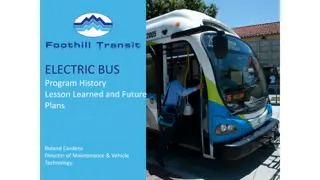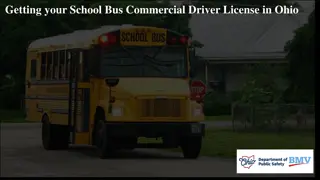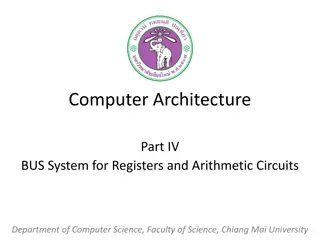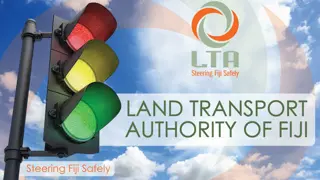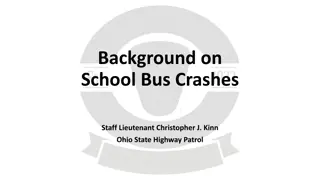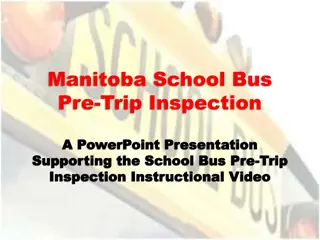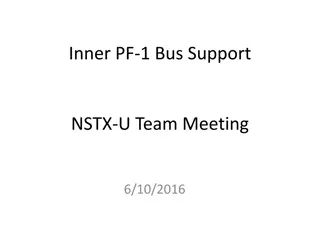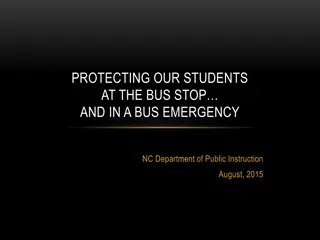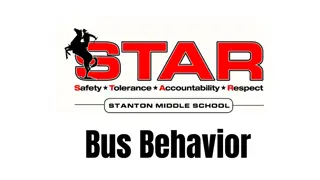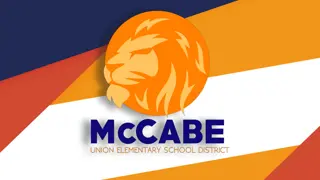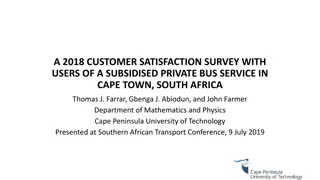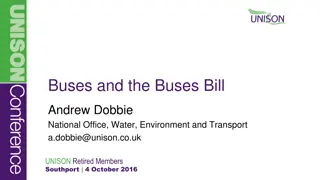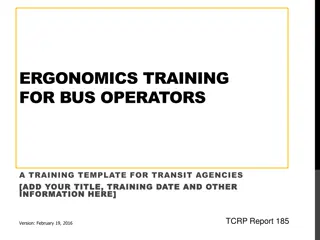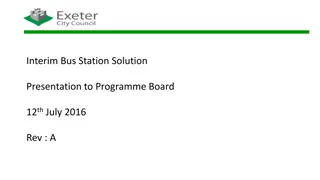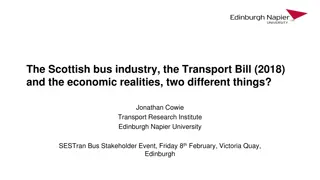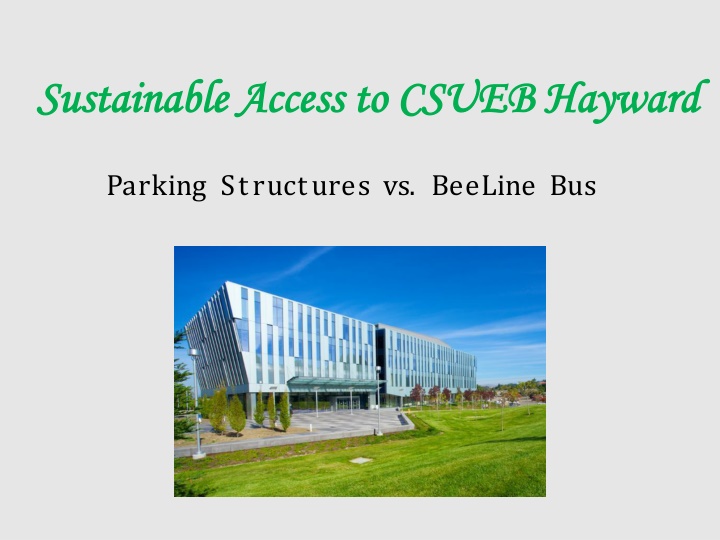
Sustainable Access to CSUEB Hayward Parking Structures vs BeeLine Bus
Explore sustainable transportation options at CSUEB Hayward, including parking structures and the BeeLine Bus service. Learn about parking permit costs, bus routes, campus shuttles, and non-auto access initiatives. Discover how the BeeLine Bus offers fast, frequent, and free transportation for students, competing favorably with driving times. Dive into details about parking counts, bus features, sustainable bus technology, and more to make informed choices for efficient and eco-friendly commuting.
Download Presentation

Please find below an Image/Link to download the presentation.
The content on the website is provided AS IS for your information and personal use only. It may not be sold, licensed, or shared on other websites without obtaining consent from the author. If you encounter any issues during the download, it is possible that the publisher has removed the file from their server.
You are allowed to download the files provided on this website for personal or commercial use, subject to the condition that they are used lawfully. All files are the property of their respective owners.
The content on the website is provided AS IS for your information and personal use only. It may not be sold, licensed, or shared on other websites without obtaining consent from the author.
E N D
Presentation Transcript
Sustainable Access to Sustainable Access to CSUEB CSUEB Hayward Hayward Parking Structures vs. BeeLine Bus
Current access Car - Parking Permits cost $195 AC transit Bus Route 60 - Runs every 20 minutes & costs $2.35 per person Campus Shuttle free for students Walk and bike Taxi, Lyft, carshare/rental
The Master Plan: Parking Structures Table 18 Parking Counts No. Parking Spaces Surface/Structure 4,400 parking spaces in five parking structures 1 Structure 2 Structure 3 Structure 4 Structure 5 Structure Structured Parking Spaces A Surface B Surface C Surface D Surface E Surface F Surface G Surface Misc. Campus Surface Surface Parking Spaces Total Parking Spaces 1,100 1,400 900 500 500 Structure #1 for 1,100 cars by 2017 was stopped by litigation 4,400 65 745 440 400 90 190 1 20 250 2,300 6,700 Non-auto access is not prioritized over auto Structured parking would be subsidized
Beeline Bus Fast, frequent, free Fast: 8 minutes, BART to campus Frequent: every 10 minutes, before 8 am to after 10 pm Free: Students ride free Bus competes favorable with driving times and meets student financial and travel-time- to-purpose budget needs.
Fast Small, maneuverable buses: 30 feet long, 30 passengers Signal preemption turns lights green for bus Right lane queue jumping: all cars stop at intersection while bus jumps ahead going straight through in right lane Electric motor torque for fast hill climbing at 40 mph
Fast Fast boarding, short dwell time at bus stops: o Low floor level with raised sidewalks (no step) o Guided docking for small gap o Prepaid fares; no fare collection by driver o Proof of purchase and educational enforcement o Stops on campus close to buildings, short walk distance
A sustainable bus High tech, clean, fuel efficient, diesel - electric dual mode motor or all electric Going downhill, regenerative braking recovers energy Can run on sustainable biodiesel or solar electric Result: energy efficiency and sustainability
Stops: campus, Bayview Village, Mission Blvd.@Carlos Bee, Highland, Fletcher, B/C St., Hayward BART
The Beeline Bus Replaces need for a parking structure Serves sustainable development of Mission corridor, not just end points Helps enrollment growth with convenient, fast transit access Serves other users, not just students Supports living without a car Increases access while decreasing traffic
Is BART too expensive? Owning a car is expensive: The average cost per mile for a car is high to buy, insure, maintain, operate. But the marginal cost of driving is low: gasoline is only about 18% of the average cost. BART plus car is expensive; BART with no car is affordable. The Beeline Bus and BART support mobility without owning a car, saving money - no car costs, no parking fees BART + BeeLine Bus is very affordable.
Needed: Update study of BeeLine model Headcounts, parking, permits, parking financial Class schedules, enrollment by time of day, classroom buildings, travel time summation Student home zips, routes to campus, City/ACTC traffic counts, ACTC traffic model, student time budgets Bus ridership, service plan, park-ride, bus garage Financing, capital and operating, class pass Ridership; cost-effectiveness; TransMetro data
Study cost of structure Parking structures should pay their own way with a charge for each use based on the full cost: land, all-in construction, and operations. Many of the costs are non-monetary: induced traffic and congestion, safety, health, pollution, greenhouse gasses, and auto dependency. Parking structures only gain the number of spaces on upper levels minus those used at ground level to support the structure. Structured parking should not be subsidized by increasing the cost of surface parking. People are unlikely to pay such a high price and transit is likely to be much more cost-effective.
Update elasticity analysis Compares travel time from BART to campus Includes travel time of all trip stages Includes drive alone, AC bus, and Beeline Bus, Driving includes hunt for space, park, walk in Beeline Bus faster than driving after 10am?
Old elasticity analysis Time Comparison, typical trip on bus corridor, estimate All trips start near Hayward BART Hayward BART to center of library on campus looking for a parking space and parking walking to bus average wait for bus riding on bus AC 60 Bus Beeline Bus Drive alone time miles time miles time miles 2.0 1.0 10.0 18.0 2.0 1.0 5.0 8.0 0.1 0.1 4.2 2.2 driving with no congestion via Hayward Blvd. and new access to parking lot G looking for a parking space and parking walk to center of library building total 9.0 2.5 3.0 6.0 18.0 0.2 0.2 2.9 2.0 33.0 0.1 4.4 1.0 17.0 0.1 2.4
Update Estimate of Ridership Travel time is the single most important factor affecting mode choice; then cost The Beeline bus can be faster than driving for about one third of students who come through downtown Hayward from the north on way to campus If about one third of the one third road the bus, it works Students avoid paying for a $130 parking permit
Update Financial Estimates Capital cost for a two - bus system - $2.86 million Beeline Bus similar or less cost as parking structure Yearly amortization and operating - $792,000 Parking fine revenue about $47,00 per year Fare revenue about $50,400 per year Parking permit revenue from about 4,460 surface spaces pays for surface parking and bus At 4.95 permits sold per space per year, 34,208 permits would be sold Bus cost would be about $20 per parking permit
Steps after update Present updated research to faculty and administrators Get a consultant for further feasibility planning: o Financial feasibility, elasticity, cost- effectiveness o Preliminary engineering estimates for capital and operating cost o Parking fees and fines; Class pass o Phased TransMetro upgrades o City of Hayward and ROW upgrades
The Bigger Picture Phase One BART to campus is just one part of a larger system of transportation and land use Big picture thinking with pragmatic, incremental implementation can achieve sustainability Instead of pavement and parking structures, get better use of campus land: residence halls, classrooms and offices, recreation recover lost West Playing Field
Green Mobility Mobility based on o Land use density for walking and biking with attractive routes, safety from traffic o Unbundling of housing and parking rents o Smart meters, parking management o Transit: BART, Shuttle, Beeline Bus o Public cars: taxi, ride hailing apps (Lyft, Uber), carshare/rental
Scaling up If Beeline Bus is successful, more shuttles are possible to South Hayward BART and park-and-ride to Castro Valley BART and park-and ride to Caltrain Baby Bullet Station (Hayward Park Station), 22 minutes Financing shifts from parking fees to class pass More carshare/rental for resident students instead of car ownership and parking on campus
Sustainable development in Bee-Mission corridor Sustainable development in corridor of walking oriented, affordable housing close to campus and transit Bayview Village: 690 units on old quarry based on non-auto modes, no need to own a car Bayview Village adds two buses, service every five minutes Development on Mission Blvd. adds a fifth bus, service every four minutes
Environment and economy Auto dependency: the major cause (58%) of CSUEB greenhouses gases, traffic congestion, inefficient access The Beeline bus o reduces greenhouse gases, other air pollutants, fossil fuel use, dependency on oil and Wahhabi oil suppliers o reduces traffic, traffic accidents/deaths o promotes walking, biking, personal health o supports revitalization of downtown Hayward
Conclusion Those who drive will see others get to campus faster at less expense. The BeeLine could make CSUEB Hayward a national leader in sustainable transportation.


